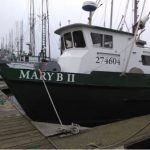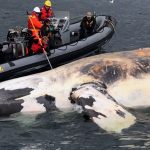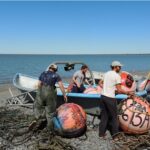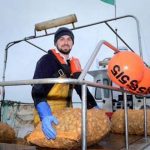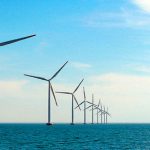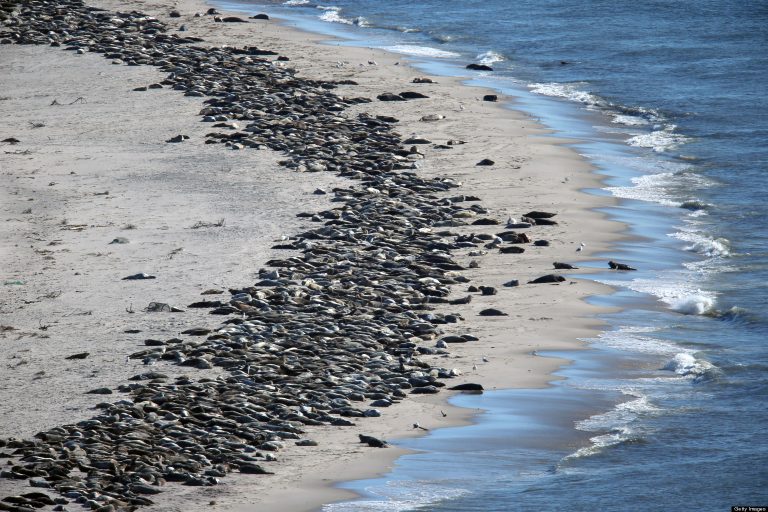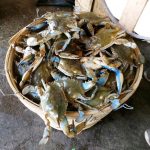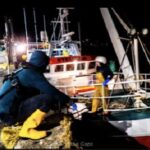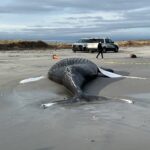Tag Archives: “overfishing”
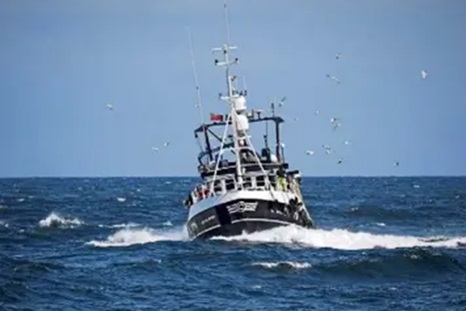
Scottish fishing chiefs lash out over conservation group Oceana’s ‘fake news’
The Aberdeen-based Scottish Fishermen’s Federation (SFF) has accused conservation group Oceana of spreading “fake news”. Oceana is today publishing a report calling for a “legally binding deadline to end overfishing”. And it claims to have the backing of nearly eight in 10 adults in Britain for stricter limits on catches in UK waters. According to Oceana, which also wants to see a ban on supertrawlers more than 100m (328ft) long, half the UK’s key fish  populations were “overfished or critically low” last year. SFF’s top team believe the conservation group’s latest report is designed to disrupt annual negotiations of overfishing quotas for 2025. Oceana is “wasting everyone’s time with a series of cherry-picked statements, reliance on obsolete science and creative wording to perpetuate a narrative of gloom and doom about fisheries that bears little relation to reality”, the fishing industry body explained. more, >>CLICK TO READ<< 20:01
populations were “overfished or critically low” last year. SFF’s top team believe the conservation group’s latest report is designed to disrupt annual negotiations of overfishing quotas for 2025. Oceana is “wasting everyone’s time with a series of cherry-picked statements, reliance on obsolete science and creative wording to perpetuate a narrative of gloom and doom about fisheries that bears little relation to reality”, the fishing industry body explained. more, >>CLICK TO READ<< 20:01

This Is Why You Don’t See People-Sized Salmon Anymore
While the orcas of Puget Sound are sliding toward extinction, orcas farther north have been expanding their numbers. Their burgeoning hunger for big fish may be causing the killer whales’ main prey, chinook salmon, to shrink up and down the West Coast. Chinook salmon are also known as kings: the biggest of all salmon. They used to grow so enormous that it’s hard now to believe the old photos in which fishermen stand next to chinooks almost as tall as they are, sometimes weighing 100 pounds or more. >click to read<11:06
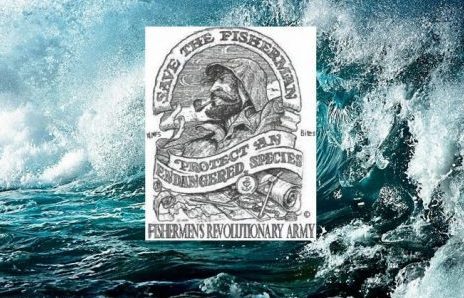
Nil’s Stolpe writes, The Magnuson-Stevens amendment I want under the Christmas tree
OVERFISHING! This has become one of the oceans branch of the doom and gloom prognisticator’s (aka Environmental Non Governmental Organizations or ENGOs) principal calls for alms. To wit, they have collectively raked in hundreds of millions of dollars from big business-supported foundations and trusting members of the public to persecute (generally commercial) fishermen who they preach are the cause of “overfishing,” the major threat to the sanctity of the oceans. (I’ll note here that the Pew “Charitable” Trusts was the multibillion dollar foundation that initiated the war on fishermen.) This purposeful misuse of the term “overfishing” has been one of the most subtle and most effective weapons in the anti-fishing activists’ arsenal. Nils Stolpe FishNetUSA >click to read< 18:00
Fake Data Behind Coral Bleaching Report
 In Hawaii, there are many who constantly try to bring to an end our ability to feed people. The latest example was November 2, 2017 when a group of legislators orchestrated an informational conference on coral reef bleaching and overfishing. The conference was put together by Representative Kaniela Ing (Maui), by Representative Cedric Gates (West Oahu), Representative Chris Lee (Waimanalo), and Representative Nicole Lowen (Kona). Why are these politicians making it harder to survive in Hawaii? Their goal is to create new laws and legislatively mandate closure of 30% of the Hawaiian Island near-shore waters. Taking into account the recent closures to the North West Hawaiian Islands, that is over 80% of what used to be fishing grounds and a food source to our local population. There were many holes in the conference keynote lecture by Dr. Alan M. Friedlander. But the news picked up on it and made it out to be a life or death situation. click here to read the story 09:09
In Hawaii, there are many who constantly try to bring to an end our ability to feed people. The latest example was November 2, 2017 when a group of legislators orchestrated an informational conference on coral reef bleaching and overfishing. The conference was put together by Representative Kaniela Ing (Maui), by Representative Cedric Gates (West Oahu), Representative Chris Lee (Waimanalo), and Representative Nicole Lowen (Kona). Why are these politicians making it harder to survive in Hawaii? Their goal is to create new laws and legislatively mandate closure of 30% of the Hawaiian Island near-shore waters. Taking into account the recent closures to the North West Hawaiian Islands, that is over 80% of what used to be fishing grounds and a food source to our local population. There were many holes in the conference keynote lecture by Dr. Alan M. Friedlander. But the news picked up on it and made it out to be a life or death situation. click here to read the story 09:09
Ray Hilborn tells US Senate overfishing shouldn’t be most important concern
 A U.S. Senate subcommittee considering the reauthorization of the Magnuson-Stevens Act heard additional testimony Tuesday, with a University of Washington researcher telling lawmakers the U.S. is leaving money in the ocean. Ray Hilborn, a professor at the university’s School of Aquatic and Fishery Sciences, noted that in many cases fisheries aren’t even bringing in half of the total allowable catch in some seasons. For example, in 2015, mixed bottom commercial fishermen caught USD 65 million (EUR 55.1 million) worth of fish available in the West Coast. The total allowable catch had an estimated value around USD 168 million (EUR 142.5 million). click here to read the story 12:20
A U.S. Senate subcommittee considering the reauthorization of the Magnuson-Stevens Act heard additional testimony Tuesday, with a University of Washington researcher telling lawmakers the U.S. is leaving money in the ocean. Ray Hilborn, a professor at the university’s School of Aquatic and Fishery Sciences, noted that in many cases fisheries aren’t even bringing in half of the total allowable catch in some seasons. For example, in 2015, mixed bottom commercial fishermen caught USD 65 million (EUR 55.1 million) worth of fish available in the West Coast. The total allowable catch had an estimated value around USD 168 million (EUR 142.5 million). click here to read the story 12:20
Hearing: Reauthorization of the Magnuson-Stevens Fishery Conservation and Management Act: Fisheries Science – click here
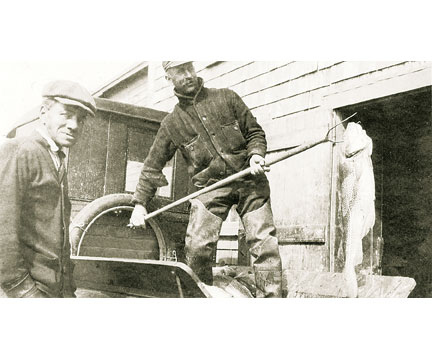
Could the Gulf of Maine’s Ground Fishery Rebound?
“The English had discovered living resources that would attract, shape, and sustain the communities of the coast of Maine for the next four centuries,” wrote journalist and historian Colin Woodard of the bounty that once existed in the Gulf of Maine in the 17th century in his book “The Lobster Coast.” “Early explorers were flabbergasted by the largesse of the Gulf of Maine, a semienclosed sea stretching from Cape Cod to Nova Scotia. They saw great pods of whales, acres of thrashing tuna, vast schools of salmon, herring and mackerel, clouds of puffins and terns, shoals of mussels and oysters, vast mudlfats infested with fat clams, cod and haddock biting at the hook, and enormous lobsters foraging in the rockweed. The waters off England and France seemed barren by comparison.” As Woodard noted, the geology and climate of the Gulf of the Maine with its 7,500-mile coastline made the area perfectly suited for a thriving fishery — a “fertile oasis in a world ocean that is, ecologically speaking, largely desert.” click here to read the story 09:27
Lauren Reid: The Truth About Tuna – Sailing to the Front Line of Pacific Tuna Fisheries
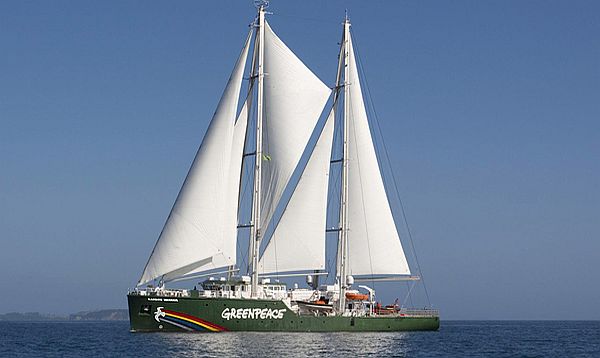 With recent stories of overfishing, shark finning, and human rights abuses (one New York Times reporter stated that being a fisherman in some parts of the Pacific Ocean “was a job where more than 50 percent of workers report their boss killing a co-worker”), I can’t help but feel extremely moved and heartbroken if these are true. The best way for me to comprehend how our canned tuna actually gets from sea to plate is to head to the source itself. Read Sailing to the Front Line of Pacific Tuna Fisheries – part one, Out on the High Seas – part two, Hard Life Aboard – part three, Reflections on Commercial Fishing – part four.09:35
With recent stories of overfishing, shark finning, and human rights abuses (one New York Times reporter stated that being a fisherman in some parts of the Pacific Ocean “was a job where more than 50 percent of workers report their boss killing a co-worker”), I can’t help but feel extremely moved and heartbroken if these are true. The best way for me to comprehend how our canned tuna actually gets from sea to plate is to head to the source itself. Read Sailing to the Front Line of Pacific Tuna Fisheries – part one, Out on the High Seas – part two, Hard Life Aboard – part three, Reflections on Commercial Fishing – part four.09:35
‘The Mortal Sea’: Overfishing not a new problem
 The closing of the Gulf of Maine cod fishery two weeks ago was no surprise to Jeffery Bolster, a University of New Hampshire history professor. Bolster began by charting the course of North Atlantic fishing, dating back to 1000 A.D.; before then, eating fish was an uncommon practice in Europe, he said. It wasn’t until the Vikings, Read the rest here 12:58
The closing of the Gulf of Maine cod fishery two weeks ago was no surprise to Jeffery Bolster, a University of New Hampshire history professor. Bolster began by charting the course of North Atlantic fishing, dating back to 1000 A.D.; before then, eating fish was an uncommon practice in Europe, he said. It wasn’t until the Vikings, Read the rest here 12:58
Alewives and Blueback Herring haven’t rebounded
 But like many fish, herring face a veritable Pandora’s box of pressure. Habitat degradation, the damming of rivers, overfishing and pollution have cut their numbers drastically, by as much as 95 percent by some esitimates. Read more here capecodonline 13:13
But like many fish, herring face a veritable Pandora’s box of pressure. Habitat degradation, the damming of rivers, overfishing and pollution have cut their numbers drastically, by as much as 95 percent by some esitimates. Read more here capecodonline 13:13
Why We Need to Put the Fish Back Into Fisheries – (We know, but you have not included the unregulated fishing community!)

There’s something missing in this cartoon.
This is another article that is incomplete in assessing why the fish stock’s may not be what they should be. It’s obvious there is a predator issue that finds crustacean populations booming. The answer, it appears is to cut back on effort, but until they come to realize the unregulated fishing community that has exploded over forty years, with no effort controls, and fishes continuously, there will be only the regulated to be blamed. This report is typically short sighted.
The research, published today in the journal Fish and Fisheries, shows that traditional fisheries targeting large predators such as cod and haddock, have declined over the past hundred years. In their place, catches of shellfish such as prawns, scallops and lobsters have rocketed as they begin to thrive in unnaturally predator-low environments often degraded by the passage of trawls and dredges. continued
Guest View: The end of “overfishing”? By Dr.Brian J. Rothschild (new england trusted)
Brian J. Rothschild is the Montgomery Charter professor of Marine Science and Technology at the UMass Dartmouth School for Marine Science and Technology.
The necessity of imposing the cuts is not clear. The council’s scientific committee has had difficulties reaching consensus on the management of key stocks. The Council is faced with a dilemma. If the stocks are down and the cuts are necessary, how do we mitigate the impact of the cuts on the people who work in the fishing industry and fishing communities, and then how do we plan for the future? At the same time, if the stocks are not down and the cuts are not necessary, how do we promote stability within the fishing industry and fishing communities, and then how do we plan for the future?
To understand the council’s short- and long-range plans on how to deal with its dilemma is crucial, particularly since the condition of the groundfish stocks may not be as bad as it seems. Read More


































